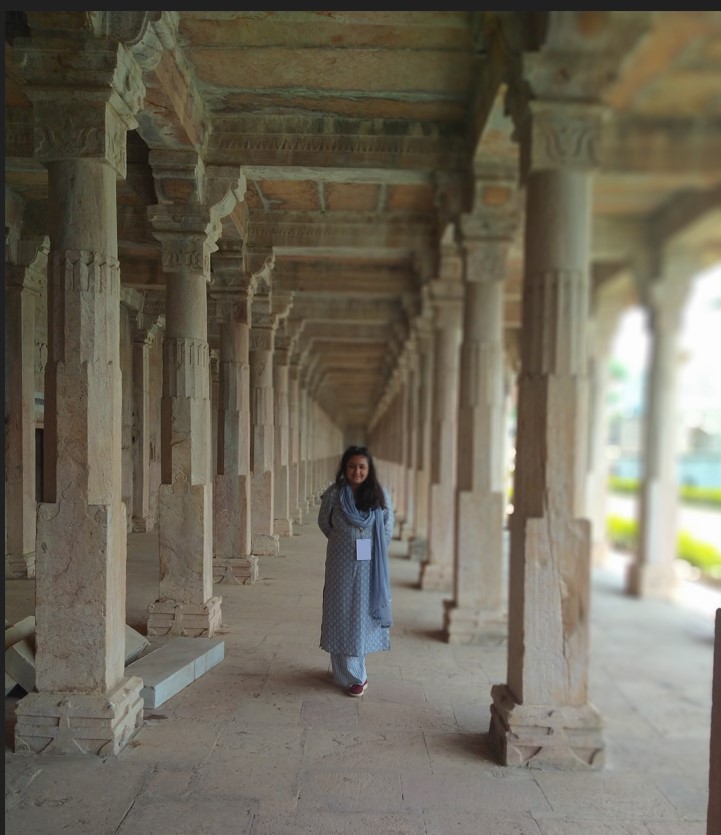By Nivi Shrivastava
Around 100 km away from Madhya Pradesh’s present-day commercial capital Indore is the well-preserved mediaeval city of Mandu (aka Mandav) in the Dhar district. The city of joy, as it was once called, is a delight for history and architecture enthusiasts who often flock to the ruins for research and study. There are 61 monuments in Mandu that are protected and declared as monuments of national importance; however, there are more than 3,000 big and small historical structures scattered over the 29 sq km of the fortress city guarded by 12 major darwazas (gates). The destination is a bliss in monsoon and if you are in a mood to explore the beauty of MP, this is the best time to be there and relive the magic.
The myth and legends:
Mandu is also known for the eternal love story of Rani Roopmati and King Baz Bahadur, and one of the popular tourist spots here is the Roopmati pavilion close to Baz Bahadur’s 16th-century place. It was once the royal residence of the Mughal kings and capital of Paramara kings, with 300 years of glorious past. It is believed that a severe plague destroyed the city and forced the residents to vacate. Just like the abandoned ancient cities of Hampi, Vadnagar, Kurukshetra, and Hastinapur, the city of Mandu turned into a ghost town after centuries of prosperity.

On a road to revival:
As part of the rural tourism initiative by the Indian Government and cultural activities like the annual Mandu Festival, officials are planning to highlight this offbeat destination. In an exclusive to Deccan Herald, Sheo Shekhar Shukla, Principal Secretary, Tourism & Managing Director of Madhya Pradesh Tourism Board, informs, “To bring Mandu back on the tourism circuit, we have undertaken numerous initiatives. To begin with we have the annual Mandu Festival that witnessed a footfall of over 20,000 in its just-concluded edition. MP Tourism has been involving tourism trade organisations to package Mandu as a 2 to 3 night destination. For this, we have set up luxury tents, curated experiences that range from rural experiences to historical walks, and trips to neighbouring towns. We endeavor to provide a tourist with an experience of Mandu that will be unforgettable.”

History in every nook and corner:
Mandu is built on an elevated Vindhya mountain range overlooking the Malwa plateau on one side and Narmada River on the other, and can be explored by foot or on a cycle tour. To trace the origin of the city, historians found inscriptions from the 6th Century CE indicating the grandeur of Mandu and excavated rock-cut caves known as Lohani caves that yielded 80 sculptures and a monolithic pillar attached to a temple complex. According to local guides, the city gained prominence in the 10th and 11the Centuries during the reign of Paramara kings, who used the geographical location to keep an eye on enemies. In 1305, Sultan of Delhi Alauddin Khalji captured Mandu from the Paramaras, and by the 14th century Hoshang Shah shifted the capital from Dhar to Mandu. One of the most prominent sites in the city is Hoshang Shah’s mausoleum, which is India’s first marble monument and served as a template for Taj Mahal. It’s a fine example of Pashtun architecture with intricate lattice work and dome-shaped tomb built near the Jami Masjid, the massive place of worship built on the lines of the great mosque of Damascus in the center of the city.

In front of the Masjid is the Ashrafi Mahal, which was the center of education or madrasa for the scholars. Besides the trio Mughal monuments is an ancient Ram Temple nearby, which was built by Maharani Sakarwar Bai Pawar in the 17th Century CE. At a walking distance from the main city are the picturesque Jahaz Mahal (built like a ship) and Hindola Mahal (swinging fort) famous for their unique architecture and landscape.
(The writer’s trip was sponsored and organized by MP Tourism, you can reach her at newspeakwork@gmail.com)
